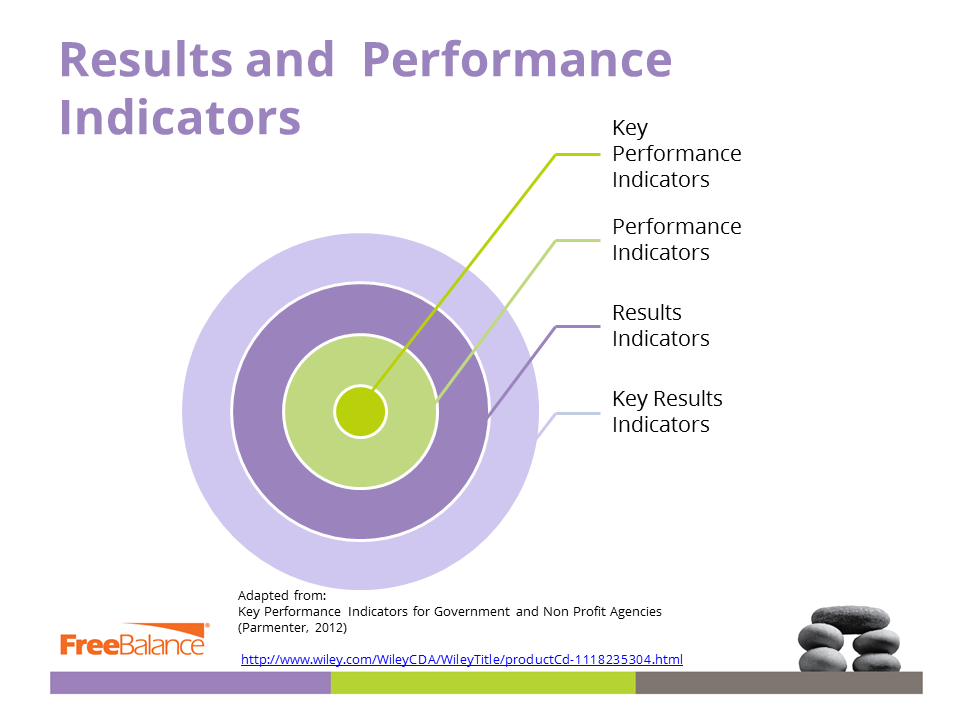Many governments are trapped the legacy policy-making trap: the search for country growth despite scientific evidence that rising income does not necessarily lead to improved perceived wellbeing. Performance management techniques, such as the balanced scorecard, enables governments to better integrate policy-making with citizen priorities. There is danger that the complexity of policy-making, and the impact of many sectors and stakeholders, can pull government planning back to the legacy status quo.
Large organizations have no lack of indicators to measure. As described in a previous entry, the term “Key Performance Indicators” is often misused because many indicators are not related to performance, and many performance indicators are “key”.
The maturing of policy-making means that only indicators that relate to citizen-centric government objectives are “key.”
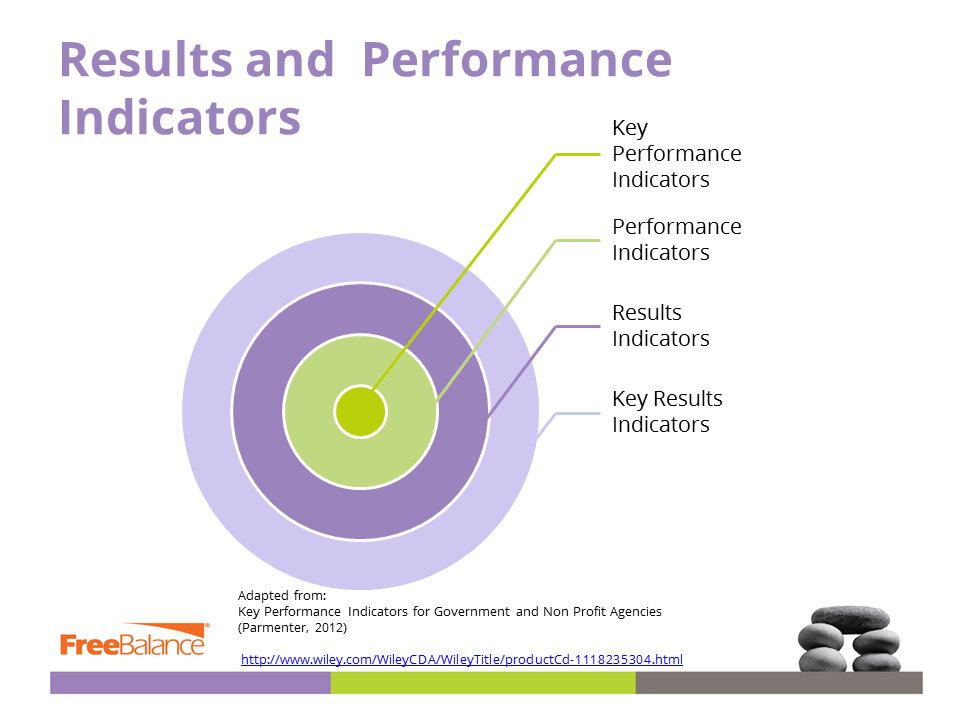
Non KPIs can be culled in policy-making in development of balanced scorecard logic map. This comes through focusing first on no more than 20 performance concepts across the 4 balanced scorecard perspectives. The resulting scorecard template should show linkages among concepts.
How can logic maps identify KPIs?
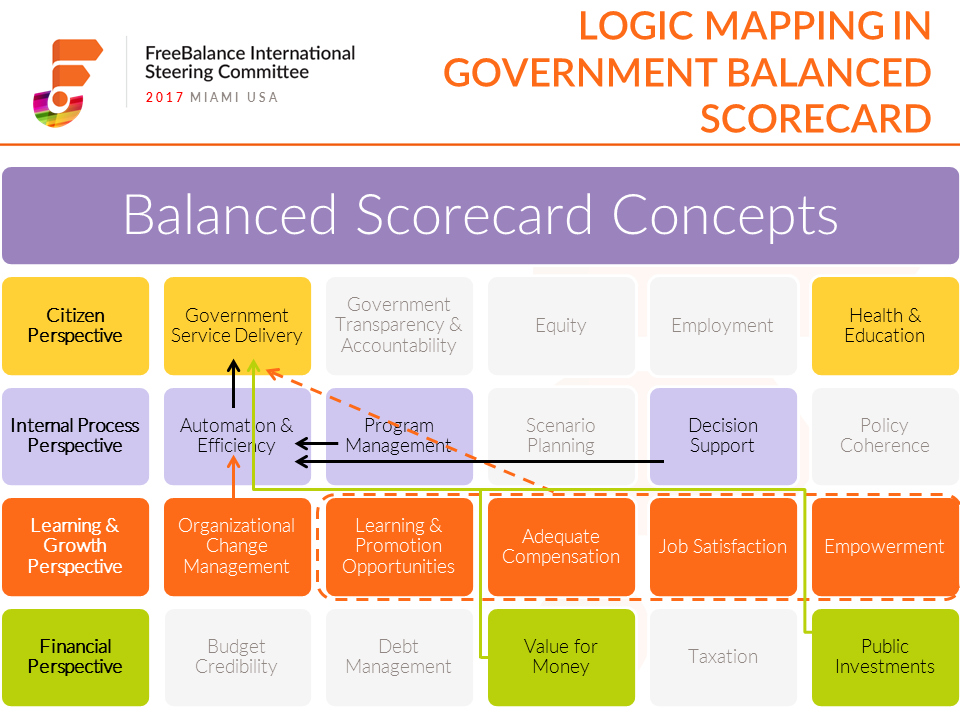
For example, a government seeking to improve citizen service delivery in order to improve perceived wellbeing should examine logical linkages. This could include:
- Financial Perspective: how improved value for money and public investments can lead to lower costs and improved service delivery
- Learning & Growth Perspective: how organizational change management can reduce resistance to automation and efficiency and how many human resources considerations like empowerment and compensation can lead to improved service delivery by public servants
- Internal Process Perspective: how improved decision-support and program management can lead to improved automation and efficiency that leads to improved service delivery
Logic mapping shows linkages that may be cause and effect. Planners may find that linkages are too indirect to make measurement useful. For example, the ability to improve the value for money in government procurement may not have a material effect in improving service delivery in some countries. Logic mapping also focuses the search for KPIs. For example, only value for money indicators that lead to improved service delivery, or other linked concepts should be selected. Planners can begin to categorize indicators in results and performance categories.
The logic map process enables culling many non-KPIs. Yet, many indicators may remain. And, it may not be clear whether remaining indicators are “key”.
How can national objectives crystallize KPIs for policy-making?
Thematic consistency can help to reduce what needs to be measured. For example, governments looking to improve overall citizen trust can prioritize concepts, and the measuring of these concepts.
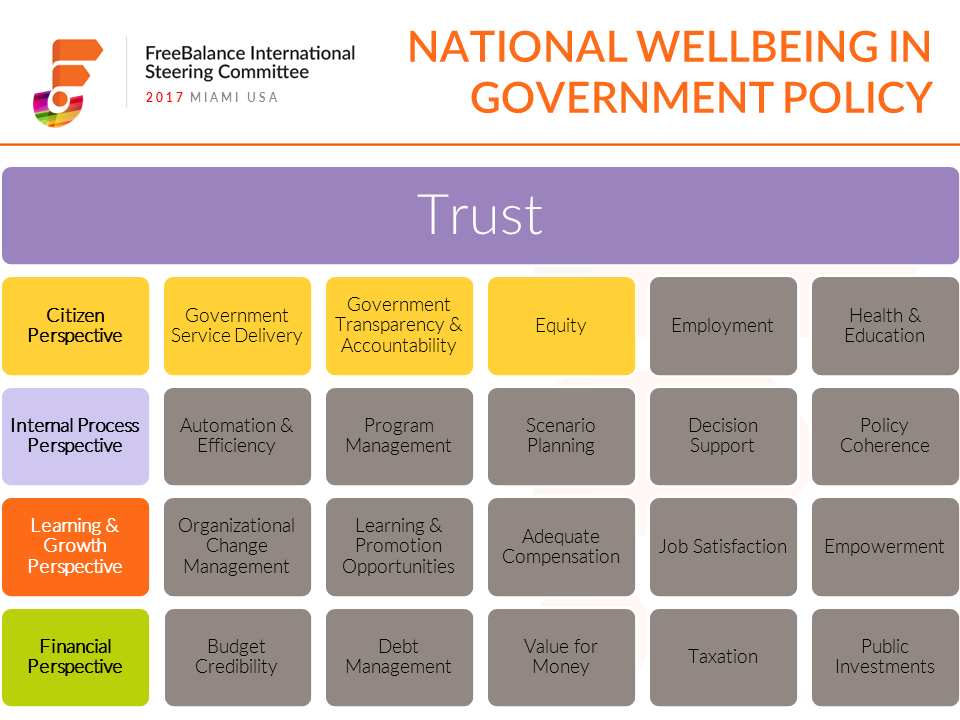
How are KPI measurements derived?
The balanced scorecard technique provides a simple “traffic light” method for identifying performance. A concept like “service delivery” will be colour-coded as red for poor, yellow for fair and green for good. Organizations typically create the targets for green, yellow and red using composite measures.
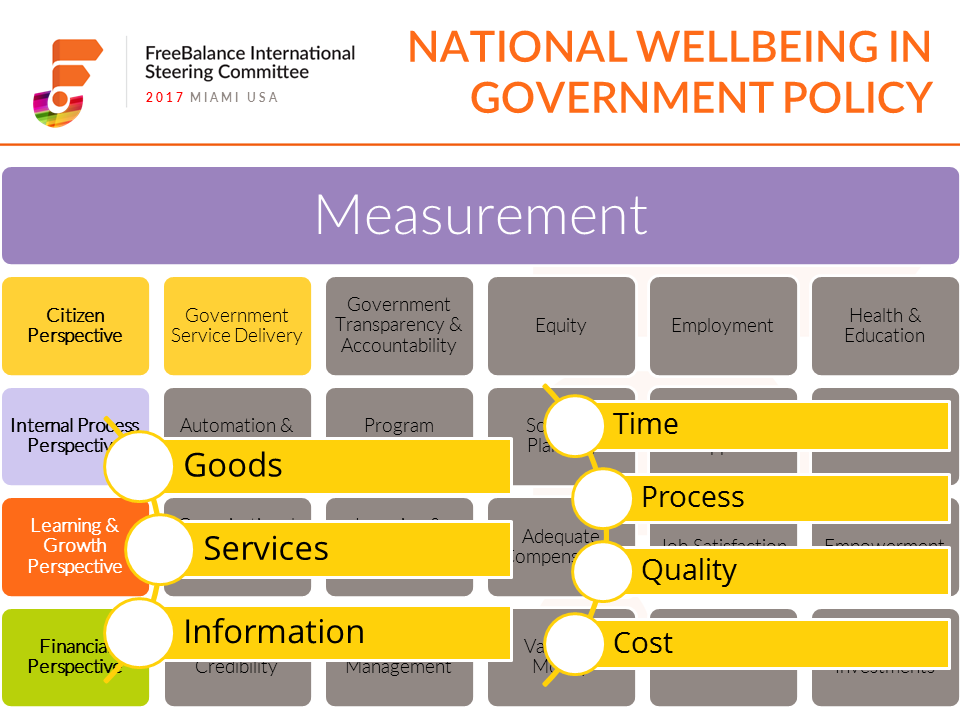
For example, governments deliver goods, services and information. There are many categories for goods, services and information. Delivery is often measured in terms of time, process complexity, quality and cost. It is possible to have an unwieldy list of potential indicators. A government looking to improve citizen trust may realize that timely delivery of fiscal information (information x time) may be more important than quality of that information. In other words, publishing daily updates for budget spending, e-procurement opportunities, and tenders won may be more important that audited financial statements that are published within 6 months of government year end.
This is not to say, in this example, that governments should not be concerned about quality, cost or process complexity in the delivery of transparent fiscal information. Reducing errors through process improvement will reduce costs and enable publishing information faster. So, the process, quality and cost indicators are not necessarily “key”.
How do tools aid in rethinking policy-making?
Change requires conceptual reframing. Traditional approaches to policy-making and budget planning tend to revive past patterns of thinking, including the emphasis of growth rather than wellbeing. Tools like the balanced scorecard with rigorous processes enable governments to achieve new insights that can be formalized in policy.
